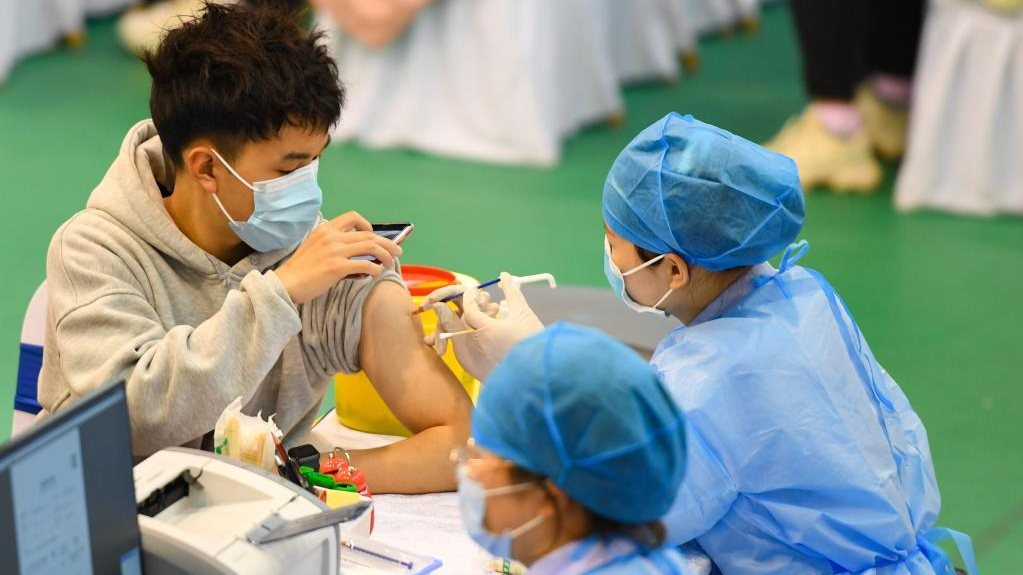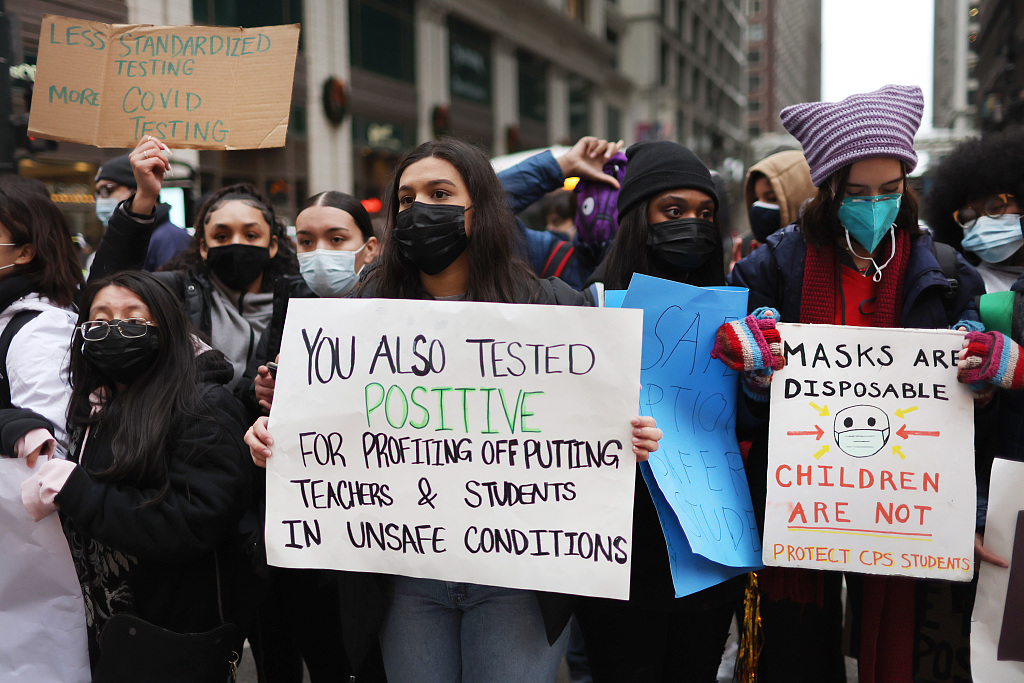
A university student receives COVID-19 vaccine at Hunan University of Science and Technology in Xiangtan, central China's Hunan Province, April 1, 2021. /Xinhua
A university student receives COVID-19 vaccine at Hunan University of Science and Technology in Xiangtan, central China's Hunan Province, April 1, 2021. /Xinhua
Editor's note: Stephen Ndegwa is the executive eirector of South-South Dialogues, a Nairobi-based communications development think tank. The article reflects the author's opinions and not necessarily those of CGTN.
While COVID-19 has affected all regions globally, some have been hit harder than others. The impact on individual countries, including the death toll, have been different as well, depending on how each foresaw and prepared for the waves of transmission that followed.
We are not out of the woods yet. The pandemic is still alive and deadly, as can be seen in the perennial escalation of infections in the U.S., which today stands at more than 100 million infections and 1.1 million deaths.
The reason why the richest country in the world has ironically been the hardest hit by the pandemic boils down to lack of preparedness. Through errors of both commission and omission, the U.S. has been ravaged by COVID-19 as it continues dithering on the pandemic's containment measures. This has cost its economy billions of dollars and millions of jobs.
The foregoing outcome is one of the reasons why the United Nations designated December 27 as the International Day of Epidemic Preparedness in 2020. According to the World Health Organization (WHO), COVID-19 has underscored the importance of investing in systems to prevent, detect and respond to infectious disease outbreaks.
Essentially, pandemic preparedness is not just about the wherewithal to erect structures, employ extra personnel, buy more drugs and medical supplies, and so on. Otherwise, the U.S. would not be in such a fix from the virus. Preparedness is equally about the moral imperative, strength of character and vision of leadership to act expeditiously in the face of potential calamity.

Public school students protest outside of the Chicago Public Schools headquarters as they are required to go to school amid the outbreak of coronavirus, in Chicago, Illinois, January 14, 2022. /CFP
Public school students protest outside of the Chicago Public Schools headquarters as they are required to go to school amid the outbreak of coronavirus, in Chicago, Illinois, January 14, 2022. /CFP
China's fight against the pandemic has been exemplary. It is instructive that the country has the highest population in the world, but one of the least rates of COVID-19 infections and deaths per capita. The country got it from the beginning and put in place strict and effective measures to deal with the pandemic.
China successfully used the WHO rulebook to avert a major catastrophe both in country and overseas. Its early preparedness strategies applied the three classic principles of infectious disease prevention and control. These include controlling the source of infection, cutting the route of transmission, and protecting vulnerable groups.
One of the first preparedness measures still vivid is the construction of hospitals in record time just after the first COVID-19 cases were confirmed. For example, in January 2020, Wuhan city constructed a complete makeshift emergency hospital to treat COVID-19 patients in a record 10 days. The 1000-bed medical facility consisted of two floors, several isolation wards and 30 intensive care units.
Contrary to the West's disinformation campaign about China's anti-COVID-19 strategies, the country's dynamic zero-COVID policy proved effective in preventing severe cases and creating opportunities to develop antiviral drugs and vaccines. Among other measures, the government implemented mass testing, lockdowns, and quarantined the sick in government facilities.
The figures so far speak for themselves, with the number of cases and deaths in the country a fraction of the dire situation in the U.S. According to statistics from China's National Health Commission published on December 23, the country had less than 10 million confirmed cases of COVID-19, with 26,431 deaths. China also administered more than 3.4 billion vaccine doses, according to the State Council inter-agency task force for COVID-19 response. Clearly, the proof is in the pudding.
Away from home, China has led pandemic preparedness efforts across the world, particularly in developing countries. As of May, China supplied over 2.2 billion doses to more than 120 countries and international organizations. It also started joint production plants or transferred vaccine-making technologies to over 20 countries, resulting in an annual manufacturing capacity of more than one billion vaccine doses overseas.
In March 2020, China initiated knowledge and information sharing in tackling COVID-19 with other countries. Information is power, and is indeed a crucial aspect in early warning, preparedness, and even management of the virus.
On March 18, 2020, China and Africa held a video conference for responding to the virus. The virtual meeting brought together health experts and other multi-sectoral audiences from over 20 countries. The ministers of health from Kenya, Ethiopia, and Libya also participated in the forum. The Chinese team of experts enlightened their counterparts on the latest protocols in treating COVID-19, including prevention and control strategies. The African teams were also informed on how to undertake efficient anti-pandemic customs border inspection for both humans and cargo.
In June 2020, China issued a white paper titled, "Fighting COVID-19: China in Action." The document published the country's prevention, control and treatment efforts in the battle against the virus, as well as the efforts made at a global level in fighting the pandemic.
The paper underscored the formation of a centralized and efficient command system – from the local to the central authorities – as a major plank in containing the pandemic. COVID-19 was yet another wake-up call of the need to mobilize all players, from governments to the private sector, in creating strategies that identify epidemic ground zero, and lock out the wider population from infections and serious disease.
(If you want to contribute and have specific expertise, please contact us at opinions@cgtn.com. Follow @thouse_opinions on Twitter to discover the latest commentaries in the CGTN Opinion Section.)